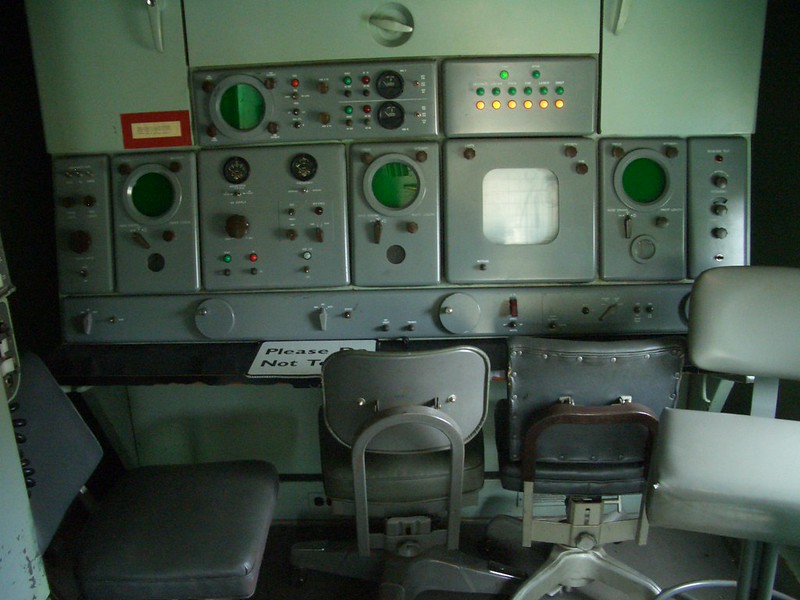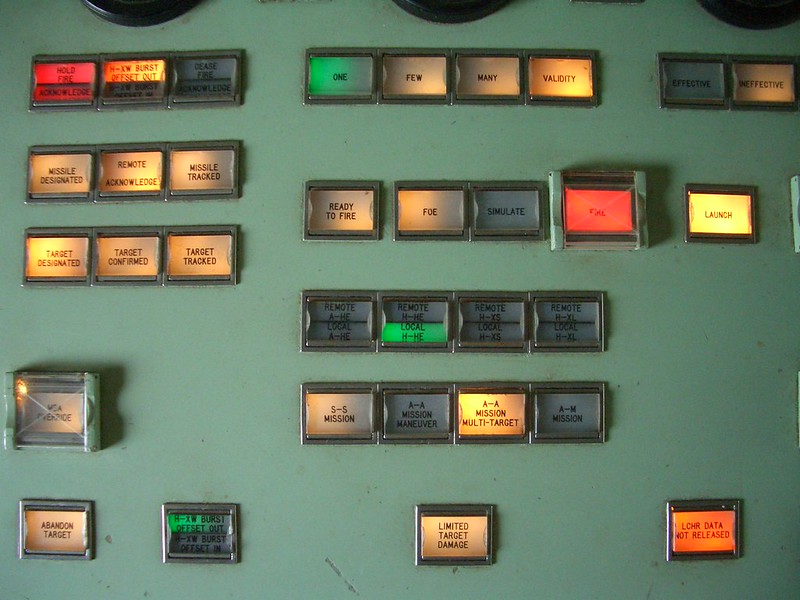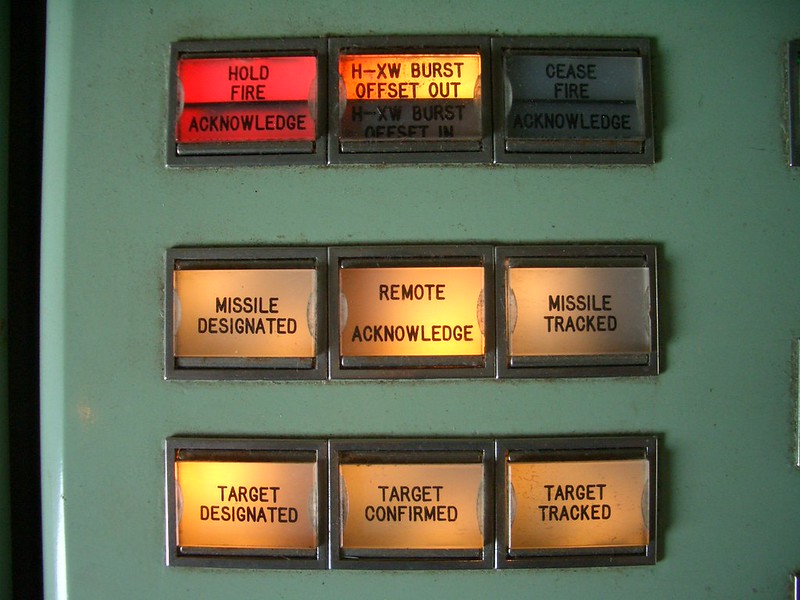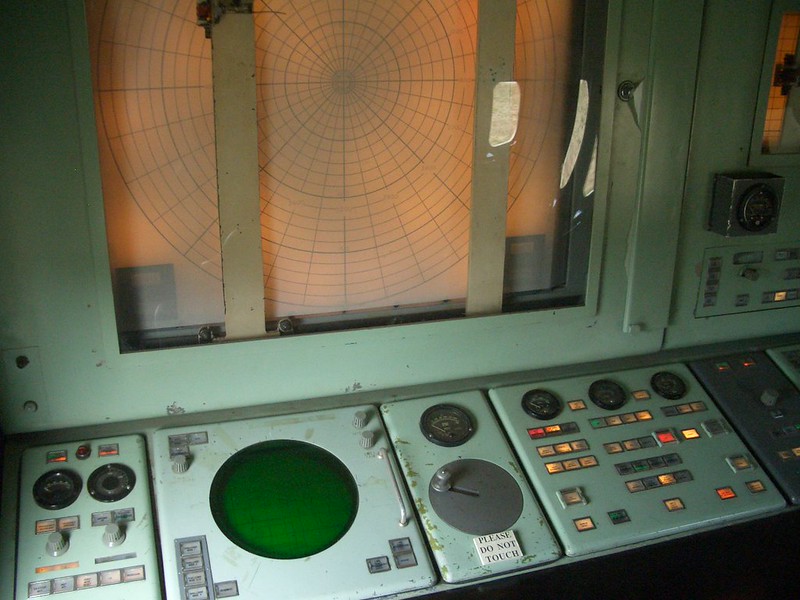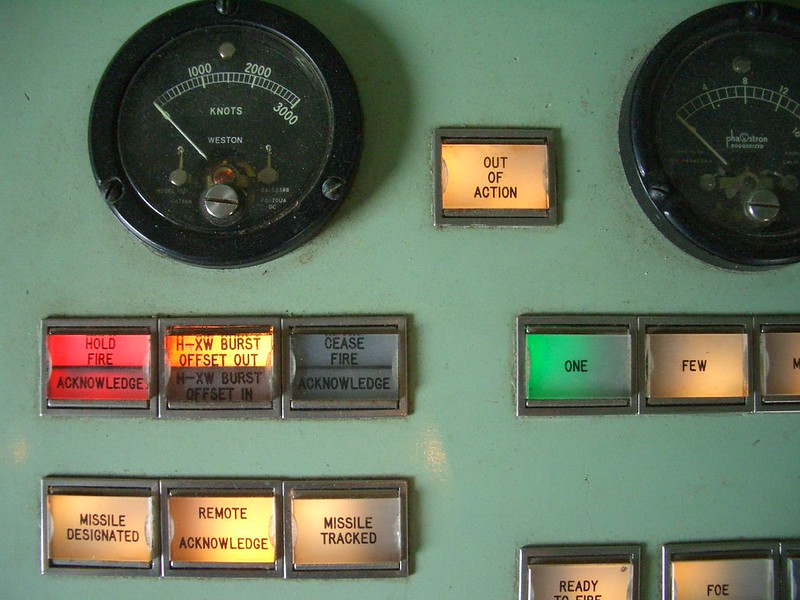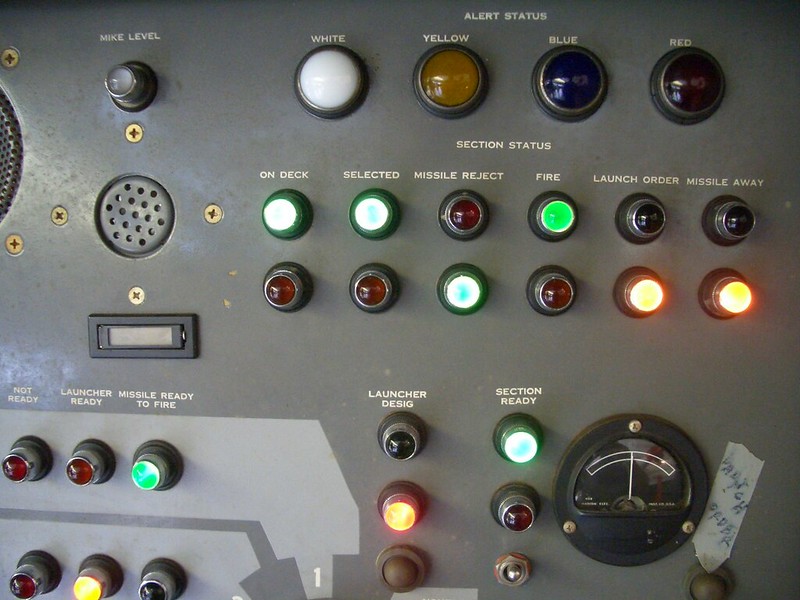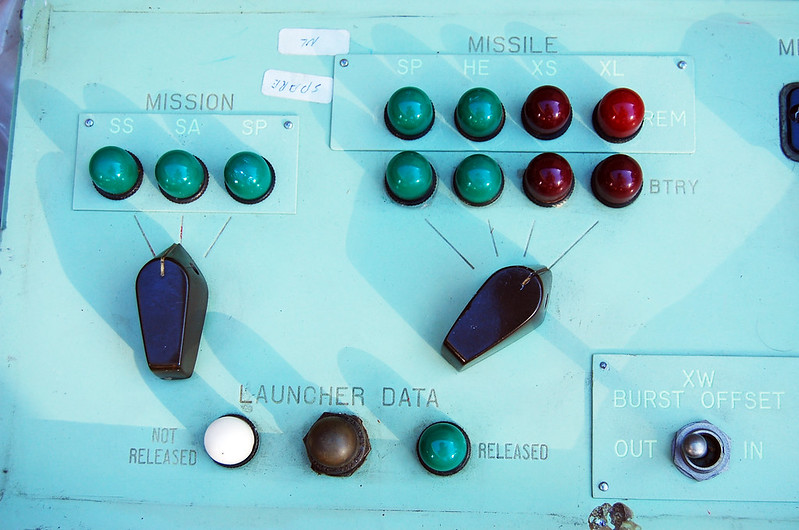This week I’ve been experimenting with layering up cloud imagery and the control dashboards used within missile control centres.
I’d been thinking about the false premise that more data guarantees more clarity, something that James Bridle talks about in his book New Dark Age. It’s a premise often used to bolster the perpetuation of surveillance technologies. But as Bridle alludes to, more data also means greater complexity and increased potential for confusion and comprehension. It is an uneasy paradox that destabilises the idea that more data enables us to see more clearly, when the reality is more cloudiness.
We have likely heard or experienced the temptations of the ‘big red button’ – do not press, urging us to do the opposite. But I’ve also been thinking that even the existence of a button sets the stage for the following events. It is there so the temptation is to use it (this is one of the ongoing arguments against the likes of Trident). So my experiments this week also looked at the aesthetics of disappearing dashboard controls, blurring into this clouded vision.
The images of dashboards are released under a Creative Commons license by photographer Todd Lapin and show the control panels within SF-88, a former Nike missile base in the Marin Headlands, US. Nike missiles were anti-aircraft missiles often equipped with nuclear weapons between the 1950s and 1970s during the Cold War. Here is a link to the Creative Commons license: https://creativecommons.org/licenses/by-nc/2.0/
The cloud videos are from a dataset created by the Multimodal Vision Research Laboratory (credit below) and also feature videos collected by Martin Setvak.
Cloud dataset credits: Jacobs N, Abrams A, Pless R. 2013. Two Cloud-Based Cues for Estimating Scene Structure and Camera Calibration. IEEE Transactions on Pattern Analysis and Machine Intelligence (PAMI) 35:2526–2538. DOI: 10.1109/TPAMI.2013.55, and Jacobs N, Bies B, Pless R. 2010. Using Cloud Shadows to Infer Scene Structure and Camera Calibration. In: IEEE Conference on Computer Vision and Pattern Recognition (CVPR). 1102–1109. DOI: 10.1109/CVPR.2010.5540093.
